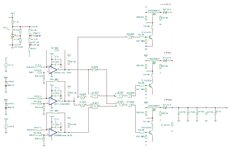zuirgham
Junior Member level 3
Hi TI team,
I'm designing Power path control for 3 supplies along with dual battery charging system.
V1= 30V(10A), Vbat1= 29V approx(7-cell in series Li-ion, 3500mAh), Vbat2= 29V approx(7-cell in series Li-ion, 3500mAh).
Design equations:
1. 30V(10A) supply will charge both batteries, But instant-on power to be delivered to system circuitry for operation.
2. Both Batteries can be charged simultaneously or one after the other.
3. Power path with no cross or reverse current conduction.
4. Priority V1 > Vbat1 > Vbat2
5. Switching between supplies without any power interruptions( Preferable 10uS)
Kindly advice for design.
I'm designing Power path control for 3 supplies along with dual battery charging system.
V1= 30V(10A), Vbat1= 29V approx(7-cell in series Li-ion, 3500mAh), Vbat2= 29V approx(7-cell in series Li-ion, 3500mAh).
Design equations:
1. 30V(10A) supply will charge both batteries, But instant-on power to be delivered to system circuitry for operation.
2. Both Batteries can be charged simultaneously or one after the other.
3. Power path with no cross or reverse current conduction.
4. Priority V1 > Vbat1 > Vbat2
5. Switching between supplies without any power interruptions( Preferable 10uS)
Kindly advice for design.
